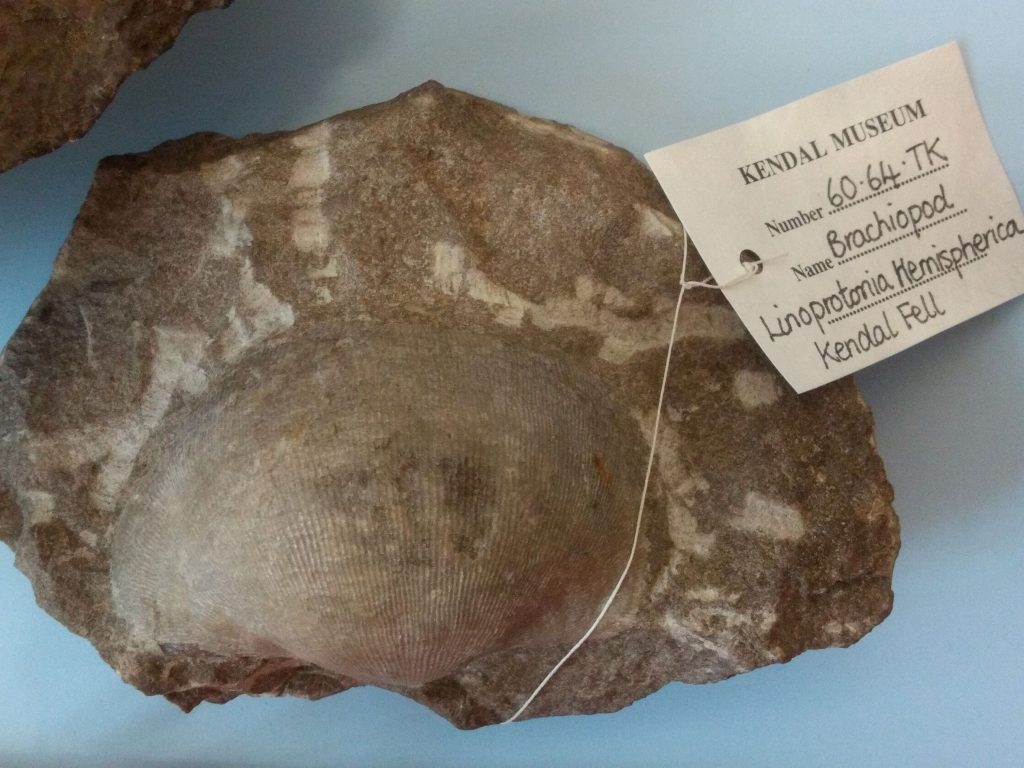This week, our Curator of Collections, Carol Davies, talks about Brachiopods.
Brachiopods are benthic (bottom dwelling), marine (ocean), bivalves (having two shells). They are considered living fossils, with 3 orders present in today’s oceans. They are rare today but during the Palaeozoic era (248–545 million years ago), they dominated the sea floors.

Brachiopods are marine animals belonging to their own phylum of the animal kingdom, Brachiopoda. Although relatively rare, modern brachiopods occupy a variety of seabed habitats ranging from the tropics to the cold waters of the Arctic and, especially, the Antarctic.
Brachiopods are virtually defenceless and their shell, enclosing the animal’s organs, is the only protection against predators. Most are permanently attached by a fleshy stalk (the pedicle) to a hard, sea-floor surface and are incapable of actively pursuing food. A few species can attach themselves directly to soft sediment and others remain unattached. Opening and closing of the shell allows food-bearing currents of water to pass through it.
The shell comprises two valves that are composed of calcite or chitinophosphate (calcium phosphate plus organic matter). The pedicle (or ventral) valve is typically externally convex. The other valve (the brachial or dorsal valve) may be similar but, in some brachiopods, it is extremely concave or more rarely conical.

